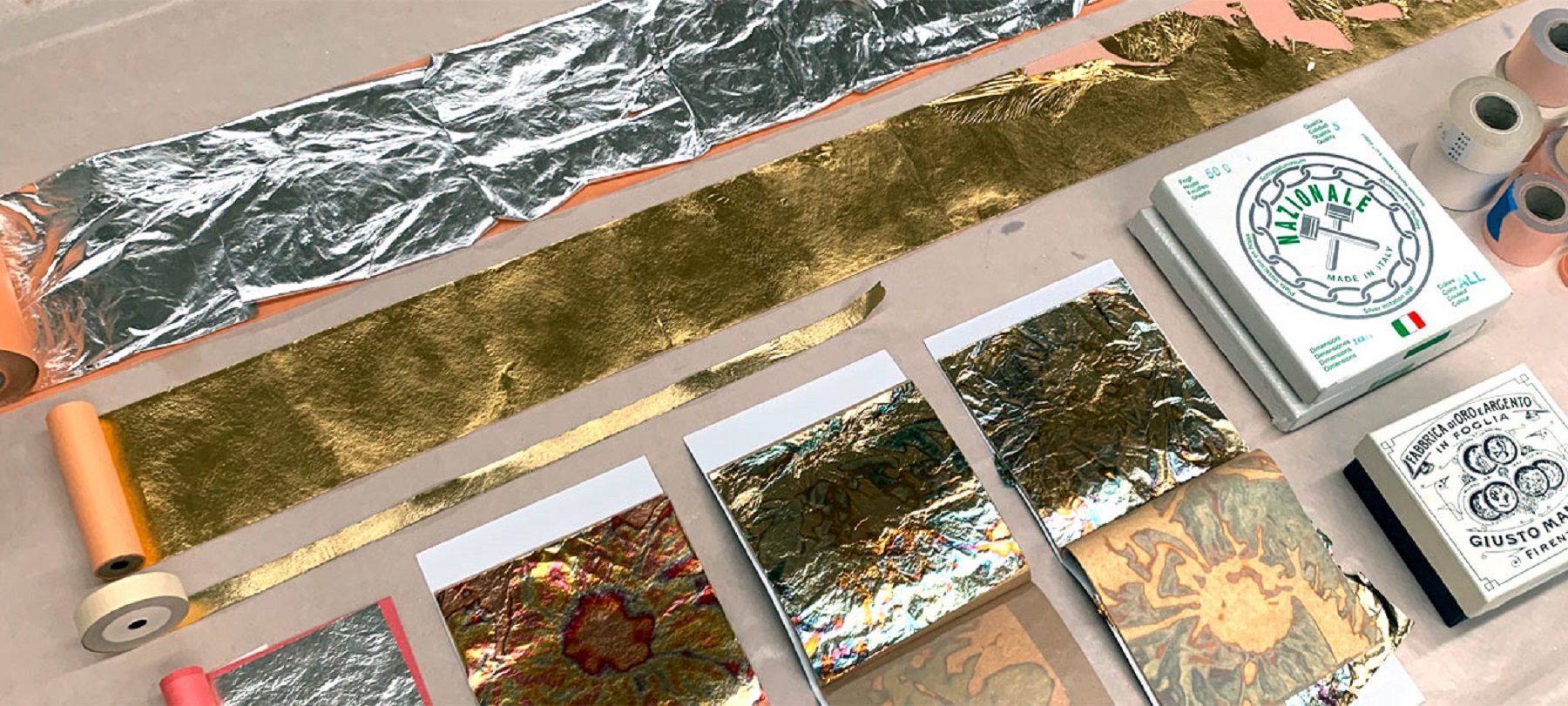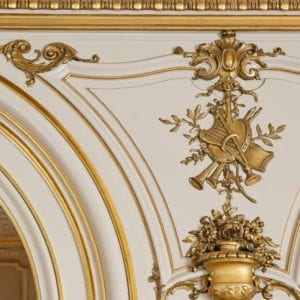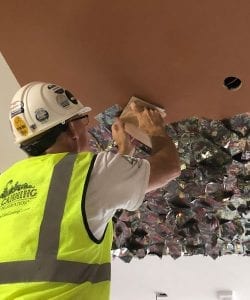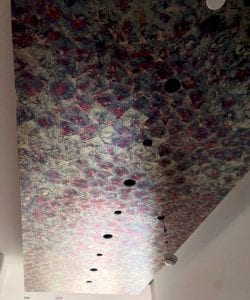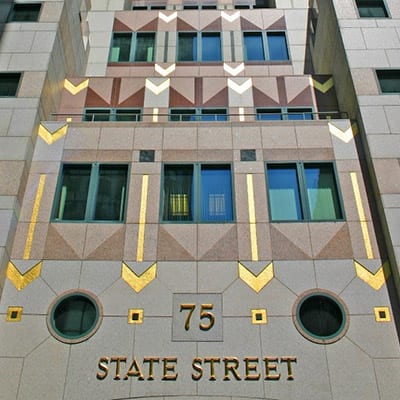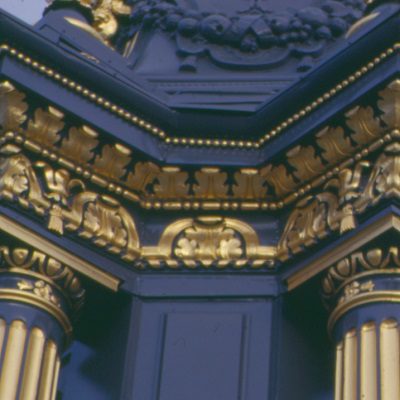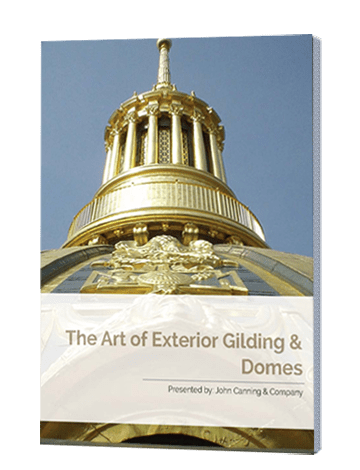Throughout history and all across the world, gilding with precious metals like gold and silver has been used to stunning effect in both exterior and interior architecture and design. Here, we’ll explore what gold leaf gilding is, how it was used throughout history, and what the gilding process is like.
What is Gilding?
Gilding is a decorative technique which consists of applying a very thin sheet of gold or other metal leaf to a surface. The result is a lustrous finish which draws the viewer’s eye to the decoration and elevates the viewing experience. While gilding most often refers to gold leaf, the term also applies to other metals turned into leaf, like copper, aluminum, palladium, and silver. Dutch metal, for example, is a form of brass made to look like gold leaf, but is much less expensive. Gilding can be found on every kind of decorative object – picture frames, furniture, sculpture, ceramics, etc. It always serves to elevate the viewers’ perception of value and importance. The same effect is true with architectural and exterior gilding, which is often found atop the gleaming domes of government buildings and sacred spaces, as well as other landmarks.
Gold Leaf Meaning & Symbolism
In both an economic and social sense, gold leaf has often been used throughout history to symbolize wealth and high social status. Its sturdiness, relative scarcity, and, of course, brilliance, has been a sign of opulence across many different styles of decoration. In religious art and architecture, gold leaf has long been associated with the divine, symbolizing the spiritual significance of the decoration. Even in the modern day, gilded decoration is prominent in churches, mosques, temples, and other liturgical art.
The History of Gold Leaf Gilding
Although it remains significant to this day, gilding is an age-old technique. The process is believed to have originated in Turkey more than 8,000 years ago, and was commonly used by the ancient Egyptians, the Phoenecians, and eventually the early Europeans. In more recent history, gilding was common in the Classic, Palladian, and Gothic architecture styles that were adopted and “revived” here in the US after the Civil War (mid 1800s) to the early 1900s. That period is referred to as the Gilded Age, when a few wealthy families compounded their riches during the industrial revolution because the trans-continental railroad made it possible to quickly ship steel and other goods to any part of the country. Greed, political corruption, and the resulting income inequality allowed the wealthy to build opulent homes in their favorite playgrounds. And, while all of these extravagant structures have since endured their share of damage, neglect, and uneducated repair and restoration attempts over the years, historic photos provide a glimpse of what they once were.
On interior ornamental features, gilding can be used to highlight and pick out details. Described as “flossing,” gilding is often found at column capitals, bead and reel mouldings, and so on, to accentuate the ornamentation and draw the viewer’s attention to the grandeur of the space. This type of ornamentation is not exclusive to gold leaf, however. Elements can be gilded in different metals such as aluminum, palladium, copper, silver, or a combination of metals to serve a range of cost and aesthetic objectives. The type of metal chosen takes into consideration the style of the design and intention of the space. A white metal, such as aluminum or palladium may be used in a classically feminine interior while gold represents masculinity and strength, for example. For exteriors, a gilded dome is most recognizable. Gold leaf, in its purest form, is the strongest and most durable metal in addition to being non-reactive. While the leaf itself is millimeters thin, using the purest form of gold leaf will ensure it lasts for decades and withstands all elements.
The Gilding Process
Although there are different application techniques, the process generally remains the same. First, a clean surface such as plaster ornament, plaster or wood molding, or painted surface detail is coated with “size,” a clear or tinted liquid/medium that dries to a slightly tacky finish. Metal leaf is then transferred to the surface and floated delicately against the size. The size acts as a glue, adhering the metal leaf to the surface. The next step is to brush, or burnish, away all the extra bits of leaf along the edges, taking great care to recapture the precious metal and leaving an almost seamless appearance. Care must be taken to secure the bond, however, too much pressure will push the leaf into the size and cause it to lose its luster.
[Re]Introducing Glamour
Throughout history, gilding has been employed to accentuate details, decoration, and craftsmanship, and it remains a significant detail in art and architecture today. A delicately everlasting material, it has and continues to signify prominence. Whether conserving, restoring, or selecting a type of leaf for a new design, remember to consider the architecture and understand the true intent of its use. The brilliance of this work requires the hand of skilled and experienced artisans in order to achieve the desired effect, and it is important to consider this fact when selecting a contractor for a gilding project. In preparation, be sure to create an effective specification for the work to be done, and take the time to find the right specialty contractor for the job.

